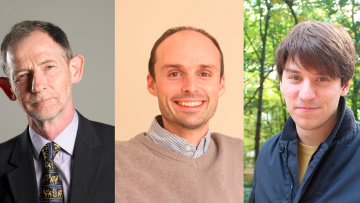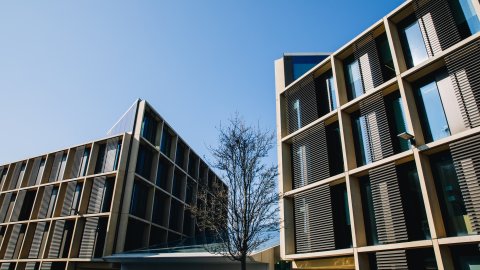12:00
Mathematical reflections on locality
Note: we would recommend to join the meeting using the Zoom client for best user experience.
Abstract
Starting from the principle of locality in quantum field theory, which
states that an object is influenced directly only by its immediate
surroundings, I will first briefly review some features of the notion of
locality arising in physics and mathematics. These are then encoded
in locality relations, given by symmetric binary relations whose graph
consists of pairs of "mutually independent elements".
I will mention challenging questions that arise from enhancing algebraic
structures to their locality counterparts, such as i) when is the quotient
of a locality vector space by a linear subspace, a locality vector space, if
equipped with the quotient locality relation, ii) when does the locality
tensor product of two locality vector spaces define a locality vector
space. These are discussed in recent joint work with Pierre Clavier, Loïc
Foissy and Diego López.
Locality morphisms, namely maps that factorise on products of pairs of
"mutually independent" elements, play a key role in the context of
renormalisation in
multiple variables. They include "locality evaluators", which we use to
consistently evaluate meromorphic germs in several variables at
their poles. I will also report on recent joint work with Li Guo and Bin
Zhang. which gives a classification of locality evaluators on certain
classes of algebras of meromorphic germs.
12:00
Resonances and unitarity from celestial amplitude
Note: we would recommend to join the meeting using the Zoom client for best user experience.
Abstract
We study the celestial description of the O(N) sigma model in the large N limit. Focusing on three dimensions, we analyze the implications of a UV complete, all-loop order 4-point amplitude of pions in terms of correlation functions defined on the celestial circle. We find these retain many key features from the previously studied tree-level case, such as their relation to Generalized Free Field theories and crossing-symmetry, but also incorporate new properties such as IR/UV softness and S-matrix metastable states. In particular, to understand unitarity, we propose a form of the optical theorem that controls the imaginary part of the correlator based solely on the presence of these resonances. We also explicitly analyze the conformal block expansions and factorization of four-point functions into three-point functions. We find that summing over resonances is key for these factorization properties to hold. This is a joint work with D. García-Sepúlveda, A. Guevara, J. Kulp.
12:00
Pushing Forward Rational Differential Forms
Note: we would recommend to join the meeting using the Zoom client for best user experience.
Abstract
The scattering equations connect two modern descriptions of scattering amplitudes: the CHY formalism and the framework of positive geometries. For theories in the CHY family whose S-matrix is captured by some positive geometry in the kinematic space, the corresponding canonical form can be obtained as the pushforward via the scattering equations of the canonical form of a positive geometry in the CHY moduli space. In this talk, I consider the general problem of pushing forward rational differential forms via the scattering equations. I will present some recent results (2206.14196) for achieving this without ever needing to explicitly solve any scattering equations. These results use techniques from computational algebraic geometry, and they extend the application of similar results for rational functions to rational differential forms.



